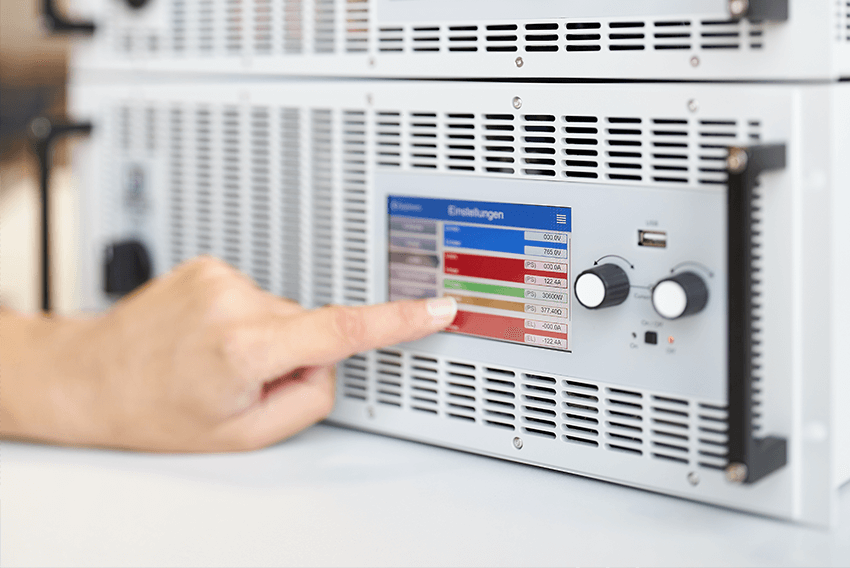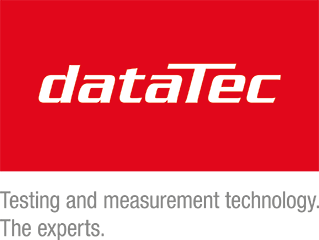#statusMessage#
Do you want to start the compare now?
#statusMessage#
Do you want to start the compare now?

Our electromagnetic environment is heavily burdened due to the multitude of transmitters and sources of interference pre...

Automated test and measurement systems that are fully connected with instrumentation and test data can significantly inc...

Temperature is one of the most common risk factors in industry. Overheating can disrupt processes, reduce quality or cau...

Electric vehicles are the future - but what happens to the batteries when they can no longer be used in cars? Efficient ...
Ensure reliable measurement results - with powerful spectrum analyzers. Our experts will support you in the selection, use and optimal utilization of these highly developed measuring devices. Find out what really matters and which typical mistakes you should avoid.
An EMI measuring receiver, also known as a radio interference measuring receiver or EMI test receiver, is a specialized measuring device for detecting and analyzing electromagnetic emissions (interference) from electronic components and devices, both conducted and radiated. It is typically used for diagnostic measurements during development or in preparation for final certification tests (pre-compliance testing). EMI measuring receivers deliver reproducible results and support standard-compliant measurement methods with the prescribed detectors – including Quasi-Peak, CISPR-Average, RMS, Peak – as well as measurement bandwidths and measurement cycles, for example according to CISPR 16-1-1.
A EMI measuring receiver (test receiver) is specially designed for measuring electromagnetic interference (EMI) in compliance with EMC standards (e.g., CISPR, MIL-STD).
Features:
The spectrum analyzer is a universal measuring instrument for frequency analysis and representation of signals in the frequency range.
Features:
Summary: EMI test receivers are specialized for standard-compliant EMC measurements. They enable certification tests and ensure compliance with national and international standards. Spectrum analyzers are versatile tools for general frequency analysis and signal monitoring. Modern devices can combine both functions, with the EMI measurement receiver always being the standard-compliant component.
A CISPR-compliant EMI measuring receiver is required when performing standard-compliant EMI measurements that meet the requirements of national or international EMC standards (e.g., CISPR, EN, FCC, VDE). This is the case, for example, when products are tested for market approval or official EMC compliance certificates must be provided. For measurements during development or internal pre-compliance tests, a spectrum analyzer with the appropriate functions is often sufficient. However, a CISPR-compliant EMI measuring receiver is required for regulatory predefined measurements or acceptance by a certification body.
A radio interference measurement receiver enables fast and efficient pre-compliance measurements to detect and correct errors in product development at an early stage. With classic and FFT-based time domain scans, interference in a desired frequency range, for example from 10 Hz to 7 GHz, can be analyzed. Optionally, preselection (filtering) can be coupled in to avoid interfering signal components and improve measurement accuracy. Predefined evaluation detectors such as the peak, quasi-peak, and average detectors enable standard-compliant evaluation of even narrowband, intermittent, or rare interference signals.
The key data includes, among other things:
Advanced options, depending on manufacturer and model variant: including mobile option (battery operation), OCXO reference for higher frequency stability, driver for automation, software integration, co-rotating generator for network analysis (e.g., measurement of cable or filter attenuation), preselection/preamplifier, FFT time domain scan.
The time domain scan increases the measurement speed compared to classic, step-by-step frequency tuning. This allows a large frequency range to be captured in seconds and significantly speeds up EMI measurement. For example, over 13,000 frequencies are measured simultaneously across the entire CISPR band B (150 kHz to 30 MHz). This captures a complete interference spectrum in a single measurement process. With an appropriate observation period, for example 100 seconds, even short-term or rarely occurring signal disturbances can be detected, which is difficult with conventional scans.
The interference level can be evaluated directly with quasi-peak and CISPR average detectors, enabling fast, standard-compliant evaluation and direct comparison with limit values.
The fast acquisition and evaluation significantly reduces the effort required for diagnosis and troubleshooting.
The preselector is a switchable filter module inserted before the mixer that filters out unwanted frequencies, prevents overdrive, and thus ensures the accuracy and reliability of EMI measurements.
Main tasks:
The frequency ranges of EMI measuring devices vary depending on the model and application, but are usually designed to cover the relevant EMC standards. Examples of typical frequency ranges:
| Frequency range |
Field of application |
|---|---|
| 9 kHz to 30 MHz | Performance-based EMI measurements, e.g. according to CISPR 16-1-1, ideal for pre-compliance and certified measurements |
| From approx. 9 kHz to several GHz | Coverage of conducted and radiated interference signals, e.g., from 9 kHz to 3, 6, or 7 GHz |
| Up to 40 GHz or higher | Standards such as CISPR 22 contain limit values up to the high GHz range for special applications such as automotive, aerospace, military technology, and modern radio applications. |
Some questions can be answered easily and directly on the phone. Just call us. Our experts will be happy to assist you.

